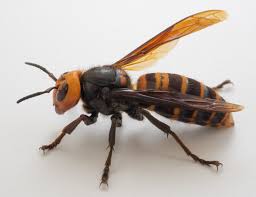
Introduction
The Asian giant hornet, known scientifically as Vespa mandarinia, has made headlines worldwide due to its alarming size and potential threat to local ecosystems and agricultural industries. With the first sighting in North America reported in 2019, monitoring efforts have heightened in Canada as experts warn of these invasive pollinators’ potential impact on native bee populations and ecosystem health. Their relevance spans beyond entomology, intertwining with discussions on biodiversity, agriculture, and public safety.
Recent Sightings and Control Efforts
In 2020, reports confirmed the presence of Asian giant hornets in British Columbia, leading to an extensive public awareness campaign and the initiation of control efforts by the provincial government. As of late 2023, entomologists continue monitoring nests, primarily in areas surrounding Langley and White Rock. The hornets are particularly concerning due to their predation on honeybees, which are vital for crop pollination and, thus, the agricultural economy.
Authorities have implemented a series of measures, including the use of decoy traps designed to capture hornets. These traps mimic the pheromones that attract the insects, effectively reducing their population. However, environmentalists caution that these control methods must be executed carefully to avoid harming non-target species.
The Ecological Impact
Dr. Susan Wilson, a researcher at the University of British Columbia, emphasizes the necessity of understanding the entire ecosystem’s dynamics when introducing control measures. “It’s not just about eliminating a threat, but also about preserving the balance within our natural habitats,” she stated. The hornets are known to attack honeybee colonies, leading to dire consequences for both local bee populations and the crops they pollinate.
Preventive Measures and Public Awareness
The Canadian government urges citizens to report any potential sightings of Asian giant hornets. To aid in this, they provide educational resources and guidelines on distinguishing between similar-looking native species. Furthermore, research is being conducted to develop effective long-term strategies for managing hornet populations without compromising the ecosystem. Public workshops are also held to educate beekeepers and gardeners on protective measures.
Conclusion
The emergence of Asian giant hornets in Canada is not just a pressing environmental issue; it embodies the broader global challenge of managing invasive species. While immediate control strategies are essential, fostering a comprehensive understanding of ecological impacts will be crucial for long-term solutions. With continued vigilance and cooperation between government entities, researchers, and the public, Canada can strive to protect its native biodiversity from this unwelcome arrival.



